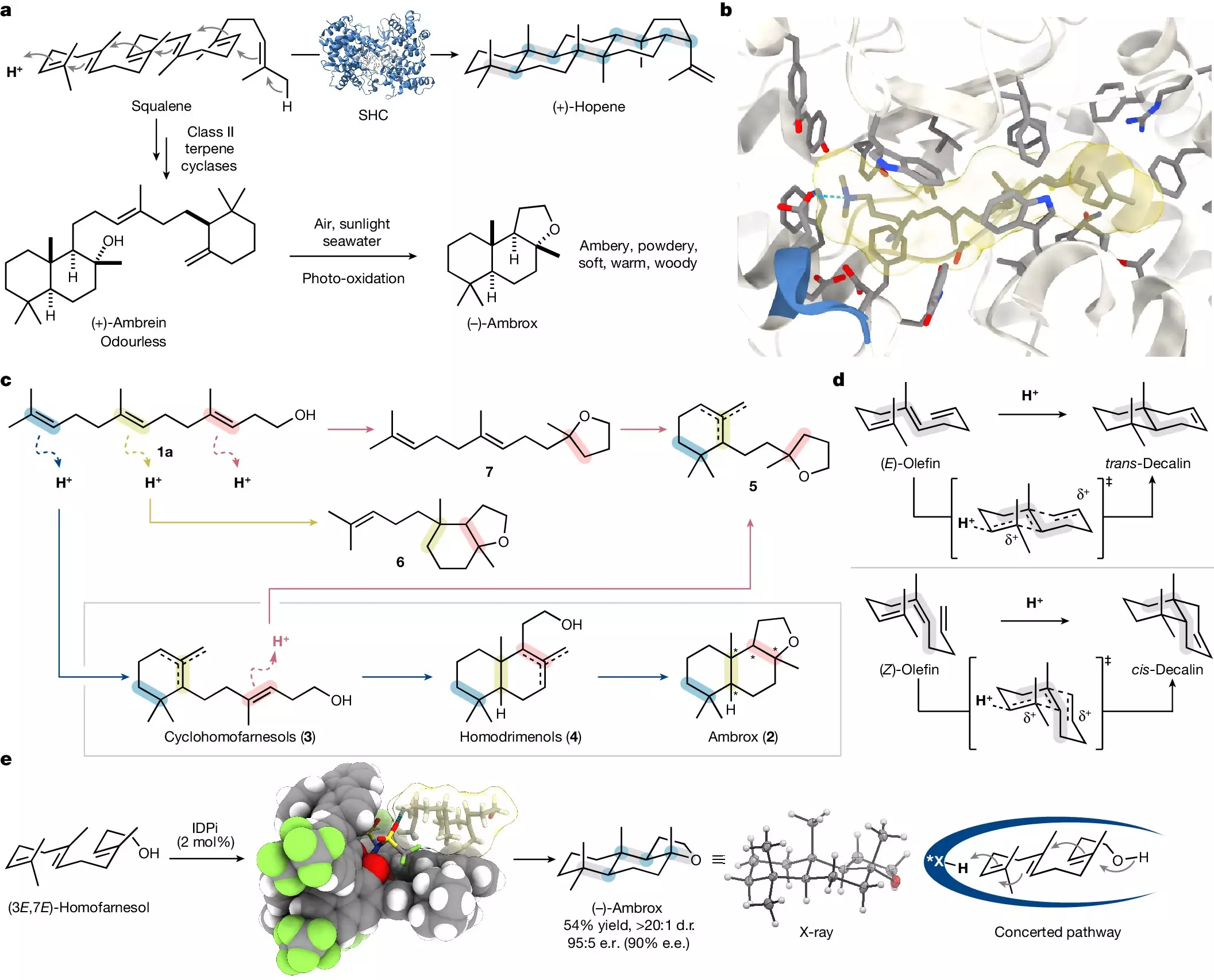Since the dawn of civilization, humans have been enamored with aromatic substances, recognizing their capability to inspire and uplift. The pursuit of pleasant scents has woven itself into the cultural fabric of societies, signifying not just personal hygiene but also a deeper connection to health and well-being. The journey of perfumery reflects an intricate interaction between nature and science, culminating in the sophisticated fragrances we often take for granted today.
Among the myriad of aromatic compounds, ambrox holds a distinguished place. Traditionally sourced from ambergris—an organic substance produced in the digestive system of sperm whales—this compound has been a staple in the fragrance industry. However, the collection of ambrox through this method raises ethical concerns and environmental implications, not least due to the endangered status of sperm whales. Moreover, the scarcity of ambergris has led to the questioning of its sustainable use in perfumery.
Recent breakthroughs in synthetic chemistry have provided alternative avenues for obtaining ambrox without relying on its natural sources. Research led by Professor Benjamin List from the Max Planck Institute for Coal Research represents a significant milestone in this endeavor. The innovative work, detailed in their publication in the journal Nature, successfully outlines a method for manufacturing ambrox in the laboratory setting, providing a feasible and eco-friendly solution to the fragrance industry’s reliance on natural ambergris.
The synthesis of ambrox showcases a complex interplay of chemistry principles. Researchers have cleverly adopted the biological process of polyene cyclization—an intricate reaction allowing simpler molecules to morph into complex structures with remarkable efficiency. This method not only reflects nature’s artistic prowess but also opens new doors for synthetic approaches in chemistry, further enhancing mankind’s ability to create desired compounds with precision.
The challenge of stereoselectivity—a term referring to the preference of one molecular configuration over another when synthesizing compounds—poses a significant hurdle in ambient organic chemistry. Ambrox presents a complex structure with multiple isomers, yet only one unique mirror image is responsible for its desirable fragrance. The research team successfully navigated this challenge by developing a stereoselective synthesis pathway, yielding the target isomer with remarkable efficiency.
The method developed by List and his colleagues is remarkable not only for its selectivity but also for its speed. Traditional methods of obtaining ambrox could take days, while the new lab-based synthesis accelerates the process to a mere overnight turnaround. This leap in efficiency serves to highlight how advancements in the lab can translate into broader industrial applications, promising a reduction in resource usage and potentially leading to a more sustainable future for fragrance production.
Another critical facet of this research entails the scalability and recyclability of the reagents used. The efficiency of the catalysts and solvents, which can be recovered and reused, underscores the burgeoning potential for this method to transition to industrial-scale production. By minimizing waste and enhancing resource management, we can envision a future where fragrances are produced in a more environmentally conscious manner.
As we look forward, the implications of this groundbreaking work extend beyond ambrox itself. It offers a template for synthesizing other complex natural products that have previously depended on unsustainable practices. The ability to mimic nature in the lab and achieve results with both speed and specificity opens a wealth of possibilities for the fragrance industry and beyond.
The synthesis of ambrox by Professor List’s research team not only addresses a significant ethical issue in perfumery but also exemplifies the potential of modern chemistry to create sustainable alternatives to natural resources. As we continue to explore these innovative techniques, we may very well witness a new era in fragrance production—one that harmonizes technology with nature, crafting beautiful smells without compromising our environment.


Leave a Reply